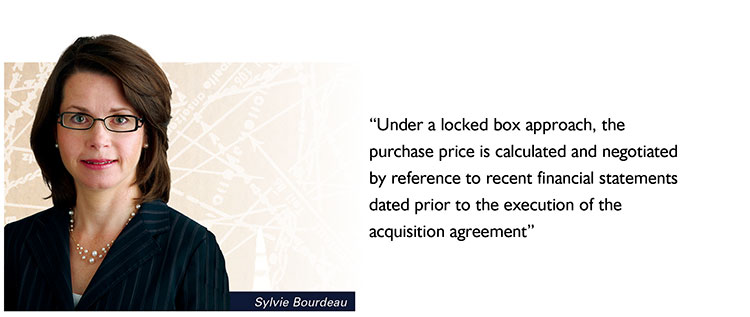There have been a significant number of insurance company M&A transactions in the Canadian market in recent years, a trend expected to continue. Fasken Martineau DuMoulin have surveyed the acquisition agreements from these transactions and analysed the key deal terms and trends therein.
A recent survey conducted by Towers Watson found that an overwhelming majority (86 percent) of North American insurance executives expect to see an increase in the volume of insurance company M&A transactions over the next one-to-three years.
The expectation of increased activity is supported by a general uptick in the level of insurance M&A activity in North America as well as a number of underlying trends, including:
- strengthening macroeconomic conditions;
- continued organic growth challenges;
- historic levels of excess capital and pressure to put that capital to work;
- emerging strategies to apply scale and analytics to improve the financial performance of potential target companies;
- increasing internet distribution, evolving consumer demands and higher service expectations; and
- increased interest from strategic players and private equity.
In addition to the broader trends, some additional factors in the Canadian market supporting the expectation of increased insurance M&A activity, include:
- the Canadian property and casualty insurance industry remains highly fragmented as the top 10 property and casualty (P&C) insurers make up approximately 65 percent of the market;
- the ongoing pressures of relatively soft market conditions and low investment returns combined with the increasing cost of more stringent capital/regulatory requirements may create a more willing group of sellers (particularly among the small and mid-sized players) than has been the case in prior periods; and
- the potential demutualisation of P&C mutual companies under regulations released by the Minister of Finance on July 1, 2015.
Survey methodology and transactions reviewed
The survey is based on a review of publicly-filed acquisition agreements with respect to nine insurance company M&A transactions completed in Canada during the past five years ranging in deal size from C$150 million to C$4 billion (with three of the transactions exceeding C$1 billion).
In each of the transactions, the target was a Canadian company or the Canadian operations of a foreign-based parent company. All of the transactions were share purchase transactions and the consideration was payable entirely in cash.
Of the nine transactions, seven involved the acquisition of a private company target, one involved the acquisition of a public company target and the final transaction involved the acquisition of a private company target which contained deal terms more consistent with a public company acquisition. Accordingly, the survey terms reviewed are predominantly consistent with private company M&A transactions.
It should be noted that although Fasken Martineau played a role in connection with six of the nine surveyed transactions, our analysis is based solely on a review of the publicly filed acquisition agreements.
Trend analysis and survey
The trend analysis and survey reviews the following provisions of the surveyed agreements:
Purchase price and post-closing adjustments
Of the seven private company transactions included in the survey, five adopted a closing balance sheet adjustment approach and two adopted a ‘locked box’ approach.
Under a closing balance sheet adjustment approach, the purchase price is paid as an estimate at closing. The purchase price is then adjusted after closing based on the difference between working capital (or other movement in the value of all net assets or a subset thereof) of target between the figure used in determining the estimated purchase price and the actual figure calculated from a special purpose closing balance sheet prepared after closing and as at the closing date. Each of the surveyed agreements which utilised this approach provided for the appointment of an independent accounting firm to resolve any disputes relating to the closing balance sheet and related matters.
Under a locked box approach, the purchase price is calculated and negotiated by reference to recent financial statements dated prior to the execution of the acquisition agreement. As agreed, price of target is fixed and written into the definitive agreement. Consequently, the buyer will have no ability to adjust the purchase price after closing and will have to rely on contractual protections (through covenants, representations and warranties) to ensure that no value leaks from the locked box. Any purchase price adjustments and permitted leakage from the locked box will have to be negotiated and settled prior to the execution of the definitive agreement. Interestingly, the two sellers in the survey using the locked box approach were European companies (in recent years, the locked box approach has increasingly become a preferred route from a seller’s perspective in Europe).
Earn-outs and escrow or holdback provisions were not common features of the surveyed transactions.
In insurance company transactions, it may be contemplated that an adjustment be made based on the favorable or unfavorable developments of claims outstanding at closing (excluding claims which may be the object of a specific indemnification under the general indemnification provisions). More precisely, this adjustment based on claims would consist of comparing the net actuarial liabilities related to the claims on closing with all amounts paid post-closing related to such claims and the net actuarial liabilities related thereto after a certain period of time as determined by negotiations between the parties (the Expiry Date Amount). Should the Expiry Date Amount exceed a certain figure determined by the parties, the purchase price would be adjusted downward and should the Expiry Date Amount be lower than that certain figure, the purchase price would be adjusted upward.
 |
Representations and warranties
In addition to the representations and warranties typically contained in private M&A transactions, the following additional representations and warranties were generally contained in the surveyed agreements:
Policy liabilities – The market standard has moved so that the seller will now not typically make representations regarding the adequacy or sufficiency of amounts recorded by a target for liabilities arising from its policies of insurance. The market standard appears to be a seller’s representation to the effect that the policy liabilities reflected in a target’s financial statements fairly present the results of the valuation by a target’s appointed actuary and that the underlying calculations and methodology have been performed and carried out in accordance with accepted actuarial practice in Canada.
Insurance policies – The buyer will seek representations regarding the target’s current insurance policies and related matters, including compliance with applicable laws and internal underwriting guidelines and maintenance and absence of default by a target under such policies.
Capital adequacy – The buyer will seek representations to confirm that it has received complete copies of all material reports submitted to relevant governmental authorities regarding a target’s capital adequacy.
Statutory statements – The buyer will seek representation regarding the fair presentation and preparation of the statutory statements required to be filed by a target with relevant regulatory authorities (this is in addition to representations and warranties regarding financial statements).
Reinsurance – The buyer will seek representations to confirm that it has received all of a target’s existing reinsurance contracts, that those contracts remain in effect and a target is not in default under any of those contracts.
Investments – The buyer will seek representations with respect to the accuracy of the list of a target’s current investments and compliance with the requirements of applicable Canadian laws in respect thereof.
Market conduct – The buyer will seek representation regarding compliance in all material respects by a target with applicable laws in relation to current policies, policy forms, policy wording, business practices and related matters. The buyer will also seek representation with respect to the disclosure of all outstanding material market conduct claims.
Consistent with private M&A transactions in general, the sellers in the surveyed agreements negotiated limit the scope of their representations:
- through the use of pervasive qualifiers (e.g. knowledge, materiality and material adverse effect qualifiers); and
- by qualifying the representations by reference to disclosure contained in separate disclosure schedules or making the representation as of a specified date or limited to materials identified in a data room.
Covenants
Pre-closing covenants
In most of the surveyed agreements, interim covenants were formulated as a covenant to conduct the business in the ordinary course (and, in most cases, consistent with past practices).
In addition to the items typically contained in private M&A transactions, the following interim covenants were contained in the surveyed agreements:
- no termination of and no material and adverse amendments to any material contracts with a distributor or reinsurer;
- no rate reductions or failure to implement actuarially-based rate increases and no extensions or renewal accelerations of existing insurance policies other than in the ordinary course of business and consistent with past practices or as required under applicable law;
- no material changes in the standard forms of insurance policies, no new product introduction and no material changes to pricing practices;
- maintain reserves in respect of policy liabilities consistent with past practices;
- maintain investment portfolio;
- no material changes to underwriting criteria, asset liability matching policies, investment policies, reserving policies or principles or risk management policies (and no adoption of new or additional criteria or policies);
- use reasonable commercial efforts to maintain third-party insurance distributors and their goodwill.
Post-closing covenants
The following post-closing covenants were generally contained in the surveyed agreements:
- Restrictive covenants from the seller not to compete with target or to hire its employees (these covenants generally ranged from 36-48 months after closing);
- Buyer’s covenant to provide director and officer insurance to outgoing directors or to change the name of target (if applicable).
 |
Indemnification
Select indemnification provisions contained in the surveyed agreements are summarised below.
Survival – The seller risks post-closing liability for a breach of the representations and warranties or covenants in the acquisition agreement to the extent that, and for the time period during which, its representations and warranties or covenants survive the closing. In the surveyed agreements, the survival periods generally ranged from 18 to 24 months.
In most of the surveyed agreements, the buyer negotiated expanded survival periods for certain representations and warranties relating to:
- tax matters (for a period of 60-to 90-days following the expiration of applicable assessment, reassessment or similar periods);
- fundamental or ‘core’ matters (e.g. title to shares, corporate existence and authority, tax residence, execution and binding obligation, no other options to purchase etc.) and in some cases environmental matters (for periods ranging from five years upwards); and
- in some cases employee benefit plans (for a period of four-to-eight years following closing).
Baskets – A basket limits indemnification obligations so that a seller is not liable for inaccuracies in, or breaches of, certain representations until losses exceed a specified minimum amount. Some of the agreements surveyed contained specific carve-outs from the minimum threshold with respect to breach of ‘core’ representations and warranties.
Baskets are generally structured as:
- Thresholds (also known as dollar-one or tipping baskets) where the seller is liable for the total amount of losses once the minimum amount is exceeded; or
- Deductibles (also known as excess-liability or spilling baskets) where the seller is only liable for losses over the minimum amount. This type of basket is generally more common.
Based on the surveyed agreements: - Buyers and sellers appear willing to forego argument on the basket content and reserve discussion to the minimum and aggregate thresholds;
- The use of deductibles is generally the most common basket structure with the minimum amount generally ranging from 0.5 percent to 1 percent of the purchase price;
- The buyers generally included a provision to ‘read out’ the materiality qualifiers from the representations for purposes of indemnification in order to prevent the ‘double dipping’ effect of a basket for indemnification and a materiality qualifier;
- Some the surveyed agreements also used mini-baskets, requiring losses from a particular claim to exceed a certain amount before they could be counted toward the basket.
Aggregate thresholds (caps) – One of the clearest trends in private M&A transactions in recent years is the lowering of the aggregate limit for which sellers will be responsible for breaches of representations and warranties.
The caps in the surveyed agreements generally ranged from 13 percent to 35 percent of the purchase price with the majority of the transactions in the 20-25 percent range. In a number of agreements, the cap did not apply to losses resulting from breach of ‘core’ representations.
Additional indemnification matters – In addition to indemnification for losses for breach of representation and warranty or covenants, some of the surveyed agreements contemplated indemnification for other matters (e.g. tax liabilities arising prior to closing but not otherwise disclosed or contemplated in the purchase price, material liabilities for unrecorded liabilities on the financial statements used for pricing negotiation or other transaction-specific matters arising during due diligence or pricing negotiations) which the parties agreed to deal with as indemnification matters as opposed to a purchase price (re)negotiation, as applicable.
Exclusive remedy – Subject to certain negotiated exceptions, the surveyed agreements generally contemplated that indemnification was the exclusive remedy after closing for breach of representations, warranties and covenants.
Although the indemnification provisions were generally consistent with private M&A transactions, a key distinction is that in the insurance industry, the number of insurance claims and litigations handled by a target is important due to the nature of the target’s activities. In most insurance industry transactions, a specific indemnification for the different claims or litigations directly related to the insurance activities of the (target insurer) is not provided for.
The buyer may be of the opinion, however, that the reserved amounts in a target’s books with respect to certain claims or litigation may not be sufficient to cover the risks related thereto. In such a situation, one option is a specific indemnification for the amount of the exposure above the amount of the reserve related thereto in the books of the target (which may be acceptable if the seller believes that the reserve is adequate and the buyer believes that it is not).
Another option is for a target to enter into a reinsurance agreement with the seller or a member of its group (if possible) to reinsure the risks related to the relevant claims and litigations. Since the seller and the buyer disagree on the accuracy of the reserve, the premium could be set at the amount of the reserve registered in the books of the target (which according to the seller is sufficient to cover the risks related to the claim).
 |
Closing conditions
The closing conditions contained in the surveyed agreements were generally consistent with those found in private M&A transactions and included:
- accuracy of representations and warranties at closing;
- obtaining necessary governmental approvals (typically insurance regulatory, competition and, in the case of non-Canadian buyers, Investment Canada);
- no injunction or other legal constraint on the transaction;
- performance and compliance with all covenants; and
- receipt of other required closing documents and instruments.
Other closing conditions found in the surveyed agreements included:
Material adverse effect – Most of the surveyed agreements included a standalone condition that provided the buyer with the right to walk away from the transaction on occurrence of a target material adverse effect between the date of signing and closing.
Financial condition – One of the surveyed agreements contained a closing condition requiring targets to have a minimum capital adequacy ratio at closing. Another of the surveyed agreements contained a closing condition requiring targets to have a minimum net asset value at closing.
Termination provisions
The following termination provisions were contained in the surveyed agreements:
- Failure to obtain regulatory approvals or close transaction by a specified date (subject, in some cases, to extension to a later date in order to obtain regulatory approvals).
- Non-fulfilment of closing conditions (subject to a right of waiver).
- Material breach of the agreement by the other party (often subject to a cure period).
- Agreement by both parties to terminate.
Consistent with private M&A transactions, the surveyed agreements did not generally contain fiduciary outs (which allows the directors of a public company seller to terminate the agreement and negotiate and accept a competing unsolicited proposal as necessary to fulfill the directors’ fiduciary duties). The three transactions that did contain fiduciary out provisions appear to have been driven by the specific facts of each case. As noted above, one of the surveyed transactions involved the acquisition of a public company and in this circumstance a fiduciary out is a common feature. The other two transactions involved the sale of a significant subsidiary by a public company parent.
Other matters
Reinsurance agreements
In financial groups, the handling of the reinsurance treaties usually covers all insurance entities of the group. Therefore the sale of an entity of the group may raise some concerns for the seller and buyer since the reinsurance experience of one entity may financially impact the others. Post-closing, the buyer’s objective will be to avoid being negatively affected by events that may involve members of the seller’s group, and the seller will have the same objective with respect to the target. Therefore, the parties should agree to use commercially reasonable efforts to terminate coverage of the seller group’s reinsurance agreements relating to the target and include it under the buyer’s reinsurance agreements.
Only in situations where the buyer and seller will not be able to terminate the reinsurance coverage for the target and to enter into new reinsurance agreements at acceptable terms and conditions will the target remain covered by the reinsurance agreements in place prior to closing. In this case, the target will remain bound by the terms and conditions of such reinsurance agreements. In this respect, the seller will likely require that the target undertake to the seller to comply with the reinsurance agreements’ terms and conditions and to collaborate with the seller to provide it with the relevant information necessary to allow the seller to fulfil its obligations under the reinsurance agreements. In addition, the agreement between the parties to the transaction will likely foresee that the target will assume its share of the relevant amounts due to the reinsurers under the reinsurance agreements which remain outstanding at the time of closing.
kchristensen@fasken.com
kbutterfield@fasken.com
sbourdeau@fasken.com
rmcdowell@fasken.com
sfarrell@fasken.com
skerr@fasken.com































 FASKEN
FASKEN Mark Stinson
Mark Stinson Kathleen Butterfield
Kathleen Butterfield Edmond Luke
Edmond Luke







